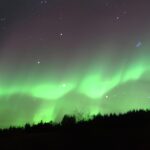Icelanders are known lovers of books. The Book-flood before every Christmas is renowned, and 1 in 10 Icelanders will publish a book in their life. Icelanders are also some of the first nations to write books in their mother tongue, as most scholars wrote in Latin in the Middle Ages. This blog post includes recommended reads from Iceland, but it is not a complete list, far from it. That would be a book in and of itself!
Christmas Book Flood
Bókatíðindi – or Book News, is published before every Christmas and is by all accounts the most-read book of every year. The booklet, published every year since 1944, includes nearly all books published before Christmas.
The Christmas book flood became a thing during the Second World War. There were import restrictions, and Icelanders were encouraged to shop locally. Paper was one of the few things that were not rationed and thus made it easy for publishing houses to publish more books. That meant that Icelanders could share their love of books even if other products were of short supply.
50% of Icelanders read eight books or more per year, and nearly everyone gets at least one book for Christmas.
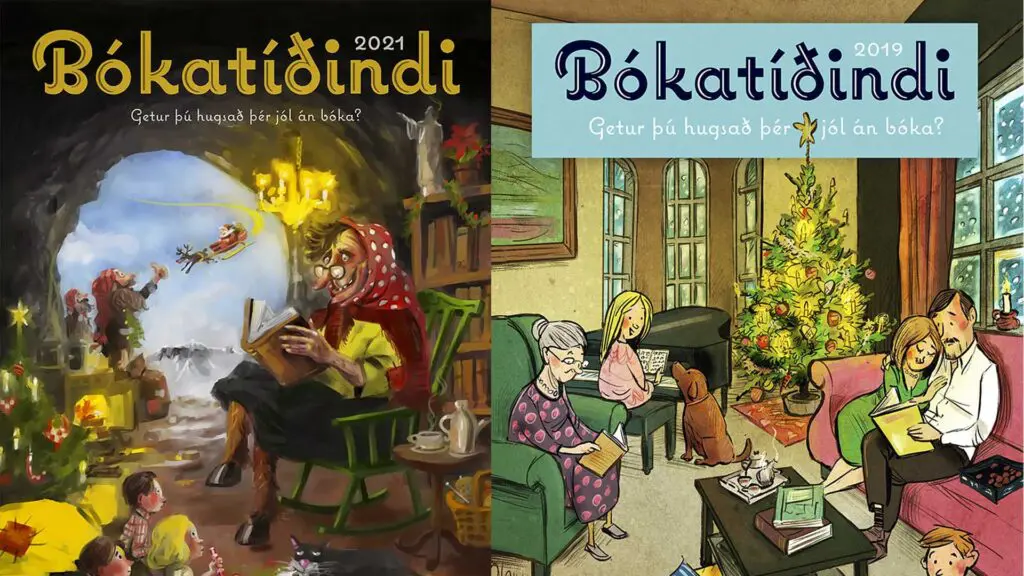
Crime novels
Nordic Noir novels are usually written from the police’s point of view and set in Scandinavia. The language is generally relatively simple, with little or no metaphors. Many know the Norwegian crime author Jo Nesbø and Swedish Stieg Larsson. Icelanders have their own crime authors, which you might have heard of.
The three consistently most popular authors are Arnaldur Indriðason, Yrsa Sigurðardóttir and Ragnar Jónasson.
The protagonists of Nordic Noir or Scandinavian Noir stories are usually morose detectives or ones worn down by cares and are far from simply heroic.
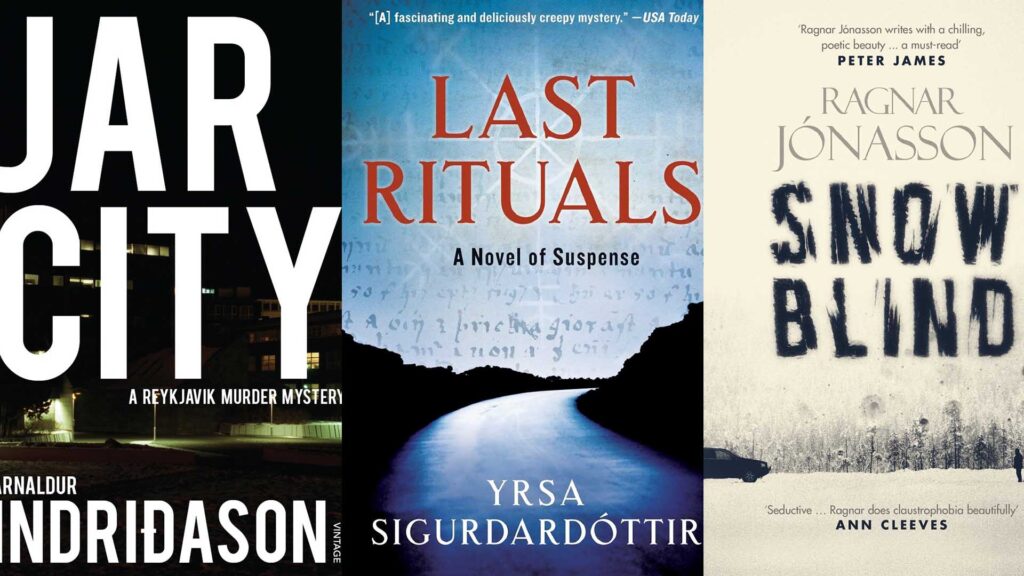
Arnaldur Indriðason
Arnaldur Indriðason’s series in Detective Erlendur is his most popular. There are now 14 books in the series, with the last released in 2014. The third book in the series, and by many accounts the best book, Mýrin or Jar City, was adapted into a film in 2006. The next book in the series, Silences of the Grave (Grafarþögn), is also worth checking out.
Arnaldur got the Glass Key award, a literature prize for the Nordic crime novel, in 2002 and 2003. In 2005 he got the Crime Writers’ Association Gold Dagger Award for Silence of the Grave. In 2013 he got the world’s most lucrative crime fiction award, the RBA Prize for Crime Writing for Shadow Alley.
Yrsa Sigurðardóttir
Yrsa Sigurðardóttir’s books are different because the protagonist is not a detective but a lawyer. Þóra Guðmundsdóttir gets sucked into various, often supernatural, cases. Her first book, Last Rituals (Þriðja táknið), is worth checking out, as well as the non-series ghost story I Remember You (Ég man þig).
Ragnar Jónasson
Ragnar Jónasson is the youngest of the three and published his first book in 2010. His Dark Iceland series, set in Siglufjörður and featuring Detective Ari Þór, is his most popular. The first book in the series is Snowblind and an excellent place to start. There are six books in the series.
Icelandic Sagas
All Icelanders are proud of the Sagas of Icelanders, whether people have read them or not. We’re most proud of being able to read them without translation, even if they were written almost 1000 years ago. The sagas focus on genealogical and family history and reflect the struggle and strife the early settlers had to endure.
The sagas are a unique historical source of Scandinavian life in the Viking age and late middle-ages, especially regarding pre-Christian religion and culture. But we cannot forget that these are stories and are most likely heavily stylised. So, they do not necessarily tell the whole truth. It is, however, believed and known from other sources that many of these people lived and shaped the country as we know it today.
Many of the people in the Icelandic Sagas figure in several sagas.
We recommend the following Sagas:
The Story of Burnt Njáll
Of course, the books vary in length, and one of the longest ones, The Story of Burnt Njáll (Njáls saga), is also one of the best. It deals with a process of blood feuds in the Icelandic Commonwealth, showing how the requirements of honour could lead to minor slights spiralling into destructive and prolonged bloodshed.
The saga’s main characters are friends Njáll Þorgeirsson, a lawyer and a sage, and Gunnar Hámundarson, a formidable warrior. Gunnar’s wife instigates a feud that leads to the death of many characters over several decades.
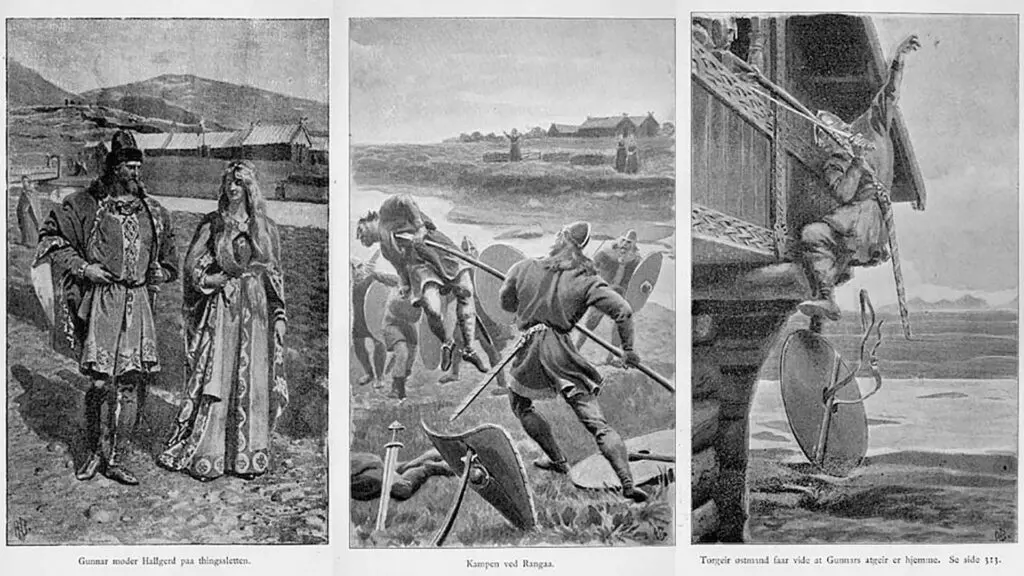
Grettis saga
Grettis saga details the life of an outlaw and bellicose Grettir Ásmundarson.
The story is split into three parts. The first section details the life of Grettir’s great-grandfather Önundur Treefoot and his escape from Norway to Iceland after fighting in the Battle of Hafrsfjord against the first king of Norway, Harald Fairhair.
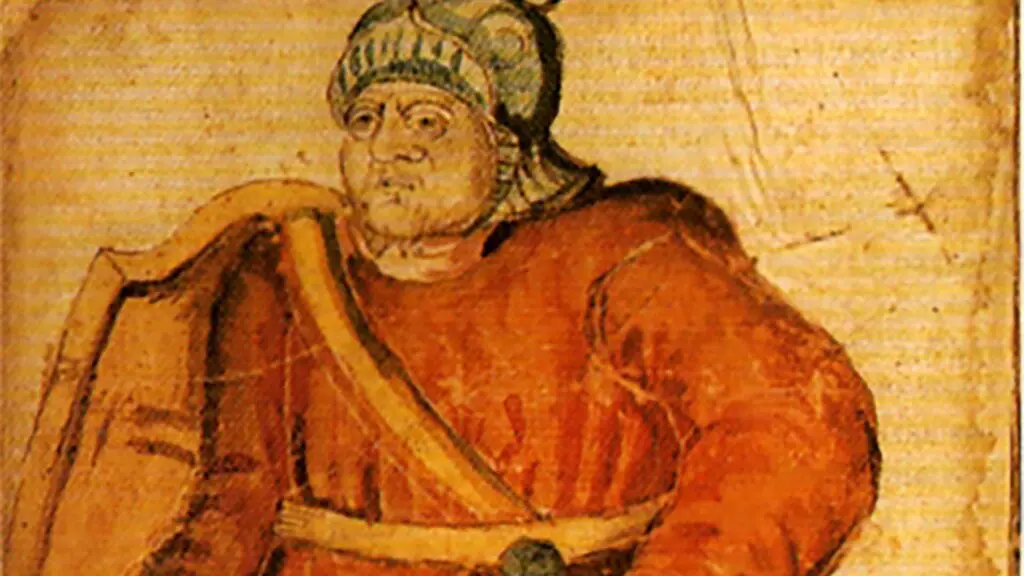
The last section deals with Grettir’s half-brother Þorsteinn Dromundur’s journey to the court of Constantinople to take revenge. He finds courtly love there before spending the latter portion of his life in a monastic cell in Rome.
The second part deals with the life, condemnation, and death of Grettir. While both Grettir’s great-grandfather and half-brother succeed in life, Grettir does not have the same fortune. His greatest wish was to become a monster-slaying hero, but instead, he became an outlaw.
There are supernatural elements in the story that make it a bit fantastical, but that is what makes it fun!
Laxdæla saga
The Saga of the People of Laxárdalr was written in the 13th century and tells the story of the people in Breiðafjörður in West Iceland in the late 9th century until the early 11th. The main focus, however, is on a love triangle between Guðrún Ósvífrsdóttir, Kjartan Ólafsson and Bolli Þorkelsson.
One of the most famous lines in an Icelandic saga is in this book: Þeim var ég verst er ég unni mest – I was worst to those I loved the most.
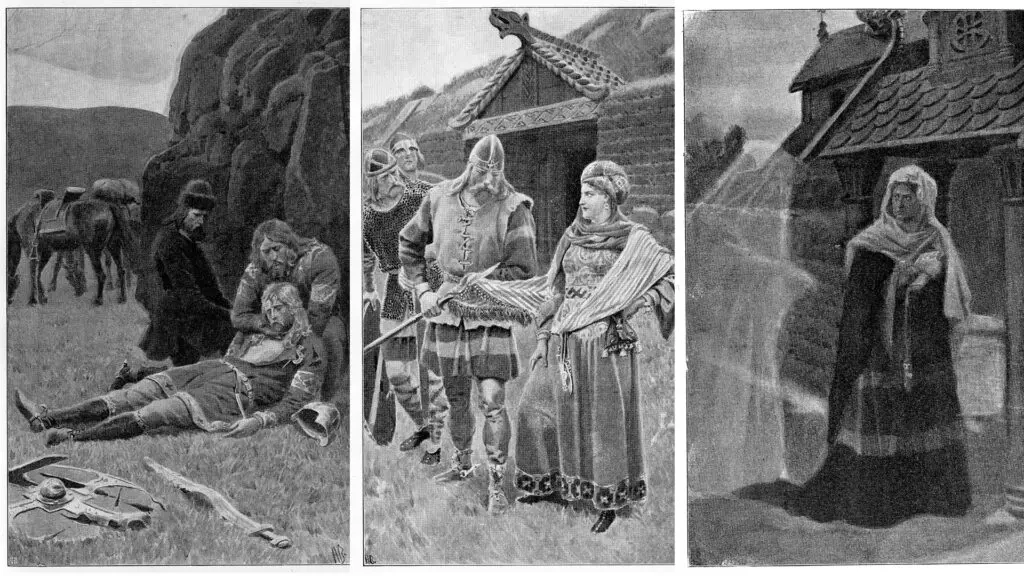
The story begins in Norway at the time when Ketill Flatnose. He and his children leave Norway to escape the tyranny of Harald Fairhair. The saga focuses on Aud the Deep-Minded (Auður djúpuðga), an exceptional woman. After fleeing both Ireland and the Hebrides, she came to Iceland with 20 free men under her command. Proving she was respected, capable, independent and strong-willed. She also had imprisoned men from Viking raids near and around the British Isles. However, she gave them their freedom once in Iceland.
Aud is one of only a few women mentioned in the Book of Settlements (Landnámabók). This book details the settlement of Iceland.
Egils saga
Egils saga details the story of the clan of Egill Skallagrímsson, farmer, Viking and skáld (poet). The saga spans the years 850-1000 and tells the family history of Egill’s grandfather to his offspring.
Egill is one of Iceland’s most famous people, but apart from this saga, he is not historically recorded. However, the saga’s style is similar to that of Heimskringla, which has led many people to believe that it was written by the same author: Snorri Sturluson.
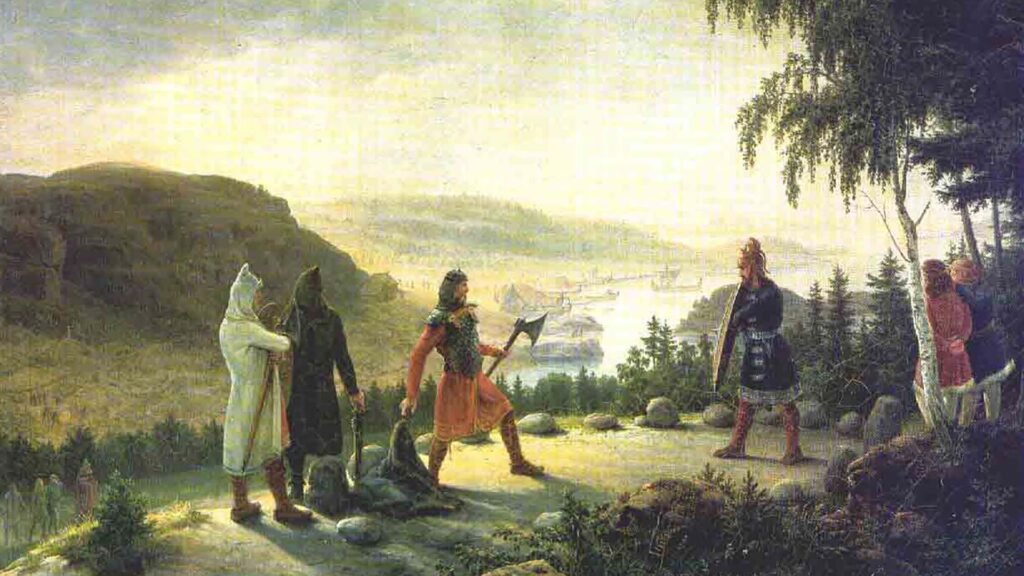
Egill is bigger than life character. His characteristics reflect the extreme elements of his family, who are either ugly or extremely beautiful. His family also includes shapeshifters. People suddenly become mad, cruel and violent even though they are wise and deliberate at other times. The story says he killed for the first time when he was seven years old. When his mother said he would become a Viking later in life, Egill composed this poem:
“My mother wants a price paid
To purchase my proud-oared ship
Standing high in the stern
I’ll scour for plunder.
The stout Viking steersman
Of this shining vessel:
Then home to harbour
After hewing down a man or two.”
(Translation by Herman Pálsson and Paul Edwards)
Collection of Sagas
The Sagas of Icelanders (Penguin classics deluxe edition) is a good buy if you want to read more than just one or two sagas.
The Penguin classic includes:
- Egil’s Saga
- The Saga of the People of Vatnsdal
- The Saga of the People of Laxardal
- Bolli Bollason’s Tale
- The Saga of Hrafnkel Frey’s Godi
- The Saga of the Confederates
- Gisli Sursson’s Saga
- The Saga of Gunnlaug Serpent-Tongue
- The Saga of Ref the Sly
- The Saga of the Greenlanders
- Eirik the Red’s Saga
- The Tale of Thorstein Staff-Struck
- The Tale of Halldor Snorrason II
- The Tale of Sarcastic Halli
- The Tale of Thorstein Shiver
- The Tale of Audun from the West Fjords
- The Tale of the Story-Wise Icelander
Nobel prize winner
Icelanders are very proud to have a Nobel prize winner in literature. Halldór Laxness is by many revered to be the best author Iceland has ever produced. He wrote novels, poetry, newspaper articles, essays, plays, travelogues and short stories.
Born in 1902, he published his first book at the ripe old age of 17 in 1919, Child of Nature. His first newspaper article was published in 1915 when he was 13 years old.
Throughout his life, he published 13 novels, seven short stories, eight plays, two poetry books, two travelogues, 18 essays and articles, six memoirs, translated four books and rewrote 6 of the Icelandic sagas.
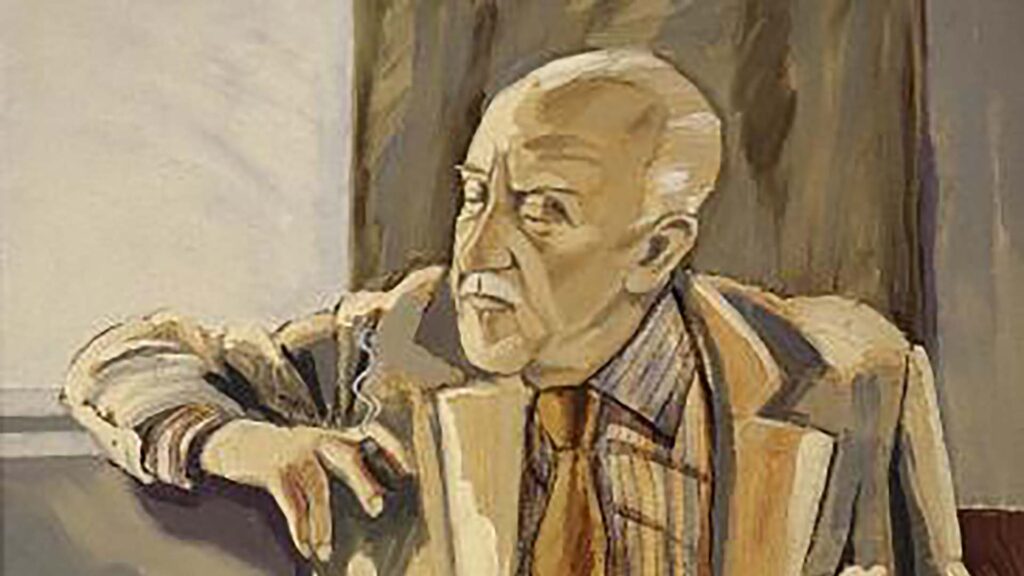
Why did he have to rewrite the Icelandic sagas since we can still read them, you might ask yourself. Well, that is because Halldór’s writing style wasn’t grammatically correct. He wrote Icelandic as we speak it, which can be challenging to read. But he felt the Icelandic grammatical rules were a bit ridiculous. In return, he was ridiculed for his writing style at first. That doesn’t mean his Icelandic was wrong; he had more control over it than many influential men.
In 1955 he was awarded the Nobel Prize in literature.
The Atom Station
When it was published in 1948, the book’s first print sold out on the day it was published. This was the first time in Icelandic history.
The story follows Ugla, an unrefined girl from the countryside of North Iceland, as she moves to Reykjavík. There she works for an MP and learns how to play the organ. In the city, she sees an entirely alien world to her. Politicians and the military move freely about the city, and she views city residents as spoiled, snobbish and arrogant. She comes from a place where the Icelandic sagas constitute most of what people talk about and are viewed as more important than reality.
Independent People
Initially published in two volumes in 1935 and 1935. This epic novel tells of the struggles of poor Icelandic farmers in the early 20th century and how they were only freed from debt bondage in the last generation and survived on isolated crofts in a barren landscape. In the novel, the main character is farmer Guðbjartur Jónsson, generally called Bjartur of summerhouses, and his struggle for independence.
This novel is often considered one of the best examples of social realism in Icelandic fiction in the 1930s. It is possibly not the easiest book to read. It is regarded as one of the best novels published in Iceland and is one of the books that helped Laxness win the Nobel Prize in 1955.
Bonus recommendations
The Secret of the Sprakkar
The First Lady of Iceland, Eliza Reid, is a historian and journalist. She recently published a non-fiction book called “The Secret of the Sprakkar; Iceland’s Extraordinary Women and How They are Changing the World“. In it, Reid explores Iceland’s attitudes toward women. She describes it both from experience and through interviews with women from varied socioeconomic backgrounds.
How I Became a Mayor of a Large City and Changed the World
Jón Gnarr, comedian, actor, and former Mayor of Reykjavík, published a book about his mayoral experiences in 2014. Gnarr launched a joke campaign before the Reykjavík elections in 2010, and, to his surprise and the Best Party, won the elections.
Other Notable Authors and Books
Andri Snær Magnason: Love Star

Synopsis from Amazon:
LoveStar, the enigmatic and obsessively driven founder of the LoveStar corporation, has unlocked the key to transmitting data via bird waves, thus freeing mankind from wires and devices and allowing consumerism, technology, and science to run rampant over all aspects of daily life. Cordless modern men and women are paid to howl advertisements at unsuspecting passers-by, REGRET machines eliminate doubt over roads not taken, soul mates are identified and brought together (while existing, unscientifically validated relationships are driven remorselessly asunder), and rocketing the dead into the sky becomes both a status symbol and a beautiful, cathartic show for those left behind.
Indridi and Sigrid, two blissfully happy young lovers, have their perfect worlds threatened (along with Indridi’s sanity) when they are “calculated apart” and are forced to go to extreme lengths to prove their love. Their journey ultimately puts them on a collision course with LoveStar, who is on his own mission to find what might become the last idea in the world.
Sjón: The Blue Fox
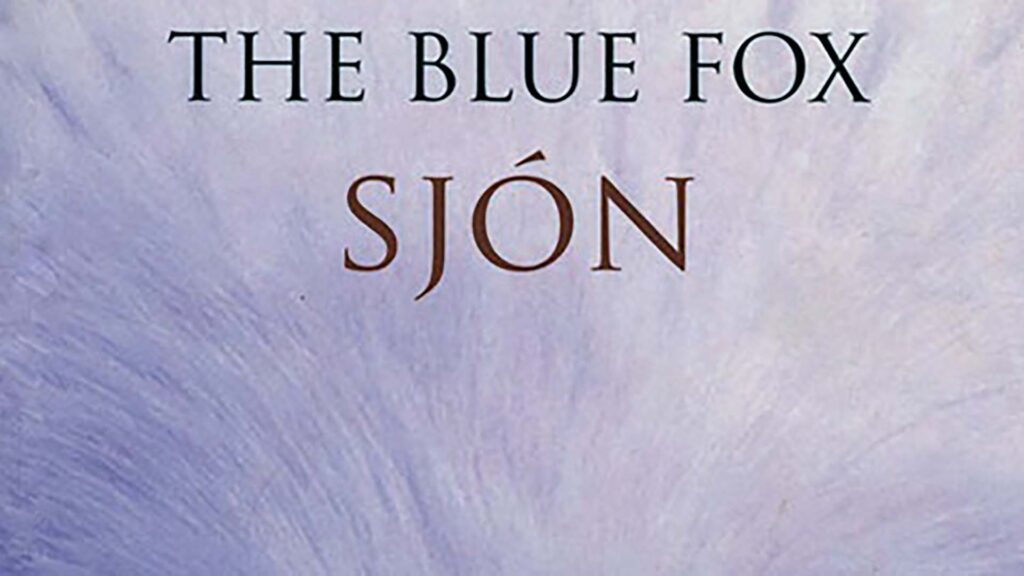
Synopsis from Amazon:
Set against the stark backdrop of the Icelandic winter, an elusive, enigmatic fox leads a hunter on a transformative quest. At the edge of the hunter’s territory, a naturalist struggles to build a life for his charge, a young woman with Down syndrome whom he had rescued from a shipwreck years before. By the end of Sjón’s slender, spellbinding fable of a novel, none of their lives will be the same. Winner of the 2005 Nordic Council Literature Prize―the Nordic world’s highest literary honor―The Blue Fox is part mystery, part fairy tale, and the perfect introduction to a mind-bending, world-class literary talent.
Einar Már Guðmundsson: Angels of the Universe
Synopsis from Amazon:
Few novels have made such a lasting impression on the Icelandic nation as Angels of the Universe. In the book, the main character, Paul, tells his life story from the cradle to the grave and describes how the shadow of mental illness falls over his life as the innocence of childhood slips away. Although the novel tells the bitterness of Paul’s fate, it is also very humorous. One of the novel’s greatest strengths is its narrative balance between hilarity and bitter sadness moments.
Jón Kalman: The Sorrow of Angels
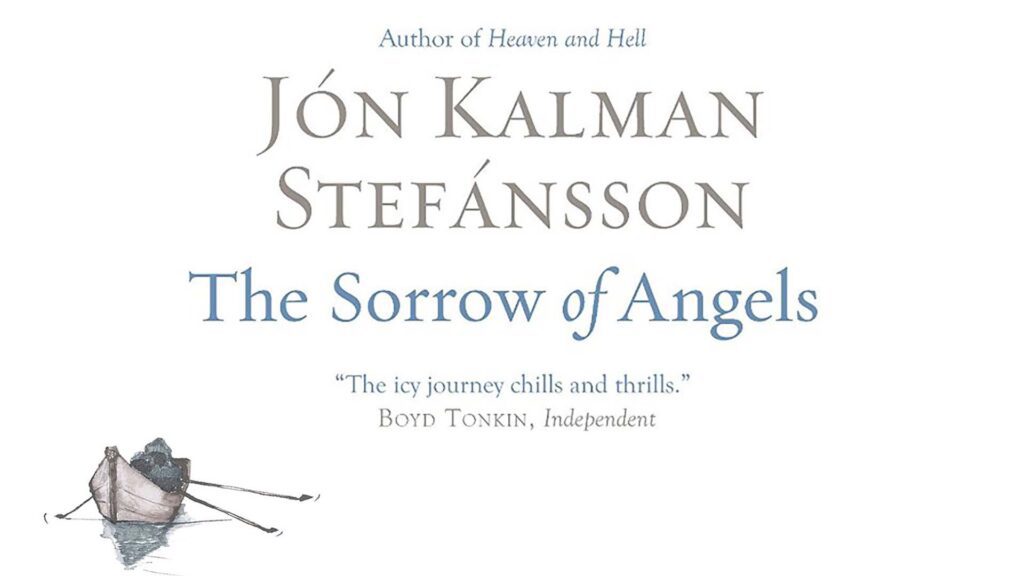
Synopsis from Amazon:
It is three weeks since the boy came to town, carrying a book of poetry to return to the old sea captain – the poetry he did for his friend Bárður. Three weeks, but already Bárður’s ghost has faded. Snow falls so heavily that it binds heaven and earth together.
As the villagers gather in the inn to drink schnapps and coffee while the boy reads to them from Shakespeare’s Hamlet, Jens, the postman, stumbles in half-dead, having almost frozen to his horse. On his next journey to the wide-open fjords, he is accompanied by the boy, and both must risk their lives for each other and an unusual item of mail.
Auður Ava Ólafsdóttir: Butterflies in November
Synopsis from Amazon:
After a day of being dumped—twice—and accidentally killing a goose, a young woman yearns for a tropical vacation far from the chaos of her life. Instead, her plans are wrecked by her best friend’s four-year-old deaf-mute son, thrust into her reluctant care. But when the boy chooses the winning numbers for a lottery ticket, the two of them set off on a road trip across Iceland with a glove compartment stuffed full of their jackpot earnings. They encounter black sand beaches, cucumber farms, lava fields, flocks of sheep, an Estonian choir, a falconer, a hitchhiker, and both of her exes desperate for another chance. What begins as a spontaneous adventure will unexpectedly and profoundly change how she views her past and charts her future.
Hallgrímur Helgason: The Woman at 1000°: As Told by Herbjörg María Björnsson
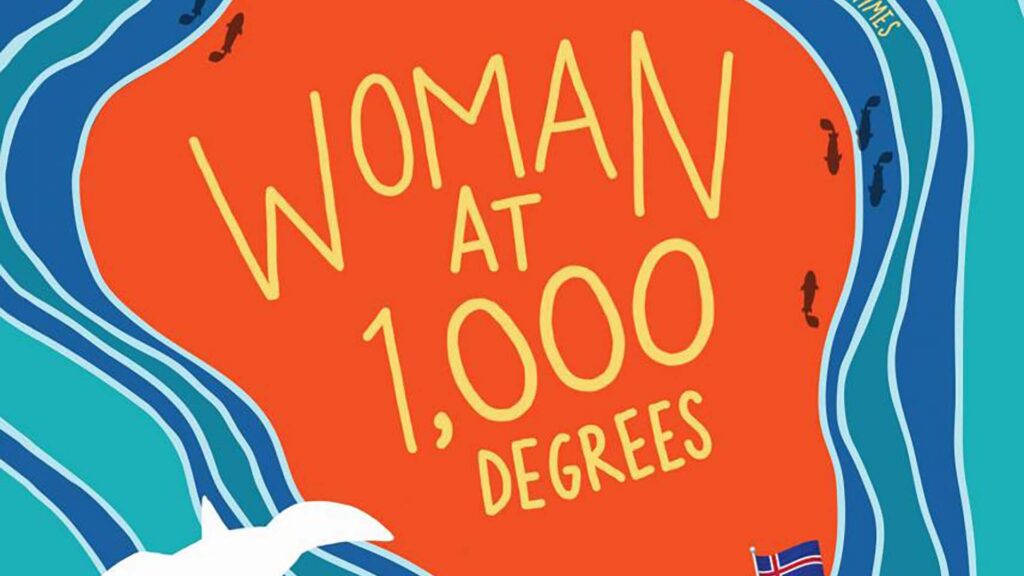
Synopsis from Amazon:
Herra Björnsson is at the beginning of the end of her life. Oh, she has two weeks left, maybe three—she has booked her cremation appointment at a crispy 1,000 degrees, so it won’t be long. But until then, she has her cigarettes, a World War II-era weapon, some Facebook friends, and her memories to sustain her.
And what a life this remarkable eighty-year-old narrator has led. From Herra’s childhood in the remote islands of Iceland, where she was born the granddaughter of Iceland’s first president, to teen years spent living by her wits alone in war-torn Europe while her father fought on the side of the Nazis, to love affairs on several continents, Herra Björnsson moved Zelig-like through the significant events and locales of the twentieth century. She wed and lost husbands, had children, fled a war, kissed a Beatle, weathered the Icelandic financial crash, and mastered the Internet. She has experienced luck and betrayal and upheaval and pain, and—with a bawdy, uncompromising spirit—she has survived it all.
Many authors: The Book of Reykjavik: A City in Short Fiction
Synopsis from Amazon:
Iceland is a land of stories, from the epic sagas of its mythic past to its claim today of being home to more writers, more published books and more avid readers, per head, than anywhere in the world. As its capital (and indeed only city), Reykjavik has long been an inspiration for these stories. But, as this collection demonstrates, this fishing village-turned-metropolis at the farthest fringe of Europe has been revered and reviled by Icelanders over the years. The tension between the city and the surrounding countryside, its rural past and urban present, weaves its way through The Book of Reykjavik, forming an outline of a fragmented city marked by contradiction and creativity.




